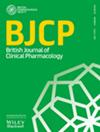Clinical research for saliva-based therapeutic drug monitoring of linezolid
Abstract
Aims
Linezolid is primarily used to treat of methicillin-resistant Staphylococcus aureus and multidrug-resistant tuberculosis infections. Thrombocytopenia due to linezolid usage is a concern, and therapeutic drug monitoring has been reported to be effective in its prevention. Plasma concentrations provide valuable information for treatment decisions; however, collecting plasma samples can be burdensome for both patients and healthcare providers. Therefore, there is interest in saliva as an alternative for monitoring, considering its potential to replace plasma samples.
Methods
Patients hospitalized at Hokkaido University Hospital and Hokkaido Spinal Cord Injury Center between April 2022 and July 2024, who received oral or intravenous linezolid treatment, were enrolled. The concentrations of linezolid were simultaneously measured in plasma and saliva samples. We determined the concentration profiles of linezolid in the saliva and examined the correlation between saliva and plasma linezolid concentrations.
Results
Eighteen patients receiving linezolid were enrolled. The average of saliva/plasma (S/P) concentration ratios of linezolid were 1.018. A strong correlation was found between the salivary and plasma concentrations of linezolid (R = .833, P < .001). Notably, in patients receiving intravenous administration of linezolid, the correlation was even more pronounced (R = .885, P < .001). Additionally, when focusing on the S/P ratio of the trough concentrations in the morning and at night, the S/P ratios at night were much closer to 1.0.
Conclusion
The concentrations of linezolid in plasma and saliva were similar, indicating their potential applicability in clinical settings. The monitoring of linezolid concentrations in saliva has been shown to be particularly suitable for patients receiving intravenous administration.

 求助内容:
求助内容: 应助结果提醒方式:
应助结果提醒方式:


